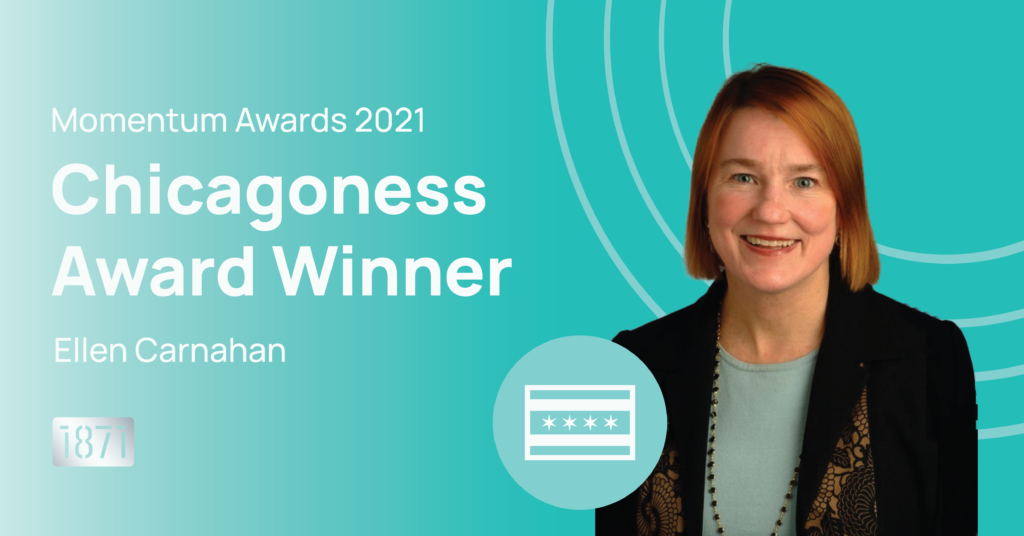We’re excited to announce the finalists for the five award categories at the 14th Annual Momentum Awards, now open for public vote!
This year’s finalists were chosen from a competitive and impressive pool of ~200 nominees. After a difficult deliberation, our judges have selected an incredible group of innovators, entrepreneurs, and businesses that are leading the way in their industries and communities. The five award categories include: Rising Star Award, Momentum Award, CityLIGHTS Award, Outstanding Tech CEO Award, and Industry Disrupter Award.
“Our 1871 Momentum Awards honor Chicago’s founders, entrepreneurs, dreamers, disruptors, and business and civic leaders that are transforming industries, building communities, shaping the future, and creating opportunities,” said Larry Eppley, Chairman of 1871 and Managing Partner of Sheppard Mullin’s Chicago office. “Our 2021 award finalists offer a bird’s eye view into Chicago’s tech environment and its bright future.”
“Chicago is the spot to build and grow a business because of the extraordinary work innovators and entrepreneurs do every day,” said Betsy Ziegler, CEO of 1871. “This group of finalists exemplifies the energy and innovative spirit that is alive in our community. Together, they’re reimagining what’s possible for themselves and their communities, and we’re honored to recognize their achievements and contributions at this year’s Momentum Awards.”
This year, winners for the Rising Star and Momentum Awards will be determined by a combination of public vote and vote by the 1871 Board of Directors. Public voting for all five awards opens on August 16, 2021 and closes on September 1, 2021. The winners of each category will be announced at the 1871 Momentum Awards on September 23, 2021, which will be held in a hybrid, both in-person and virtual format!
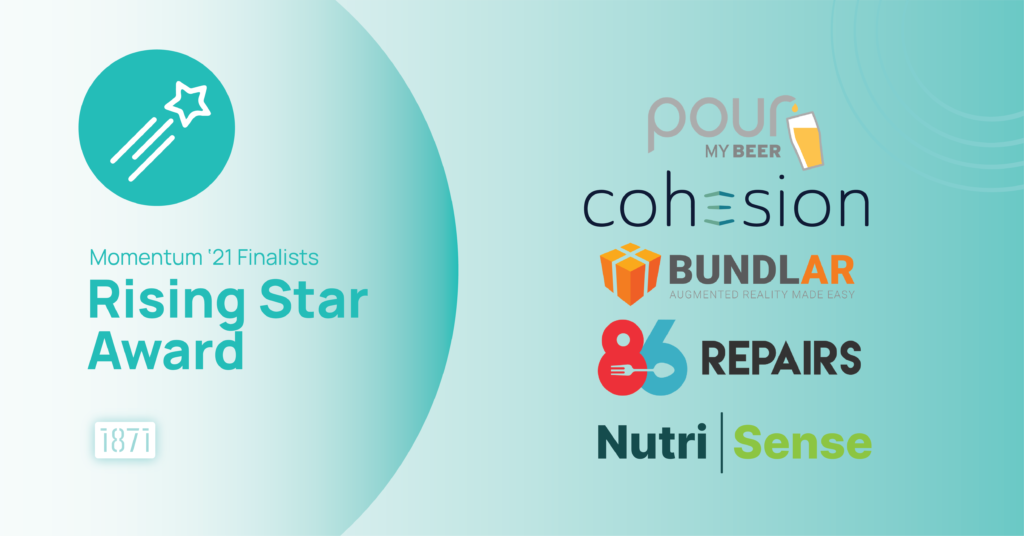
Rising Star Award
The Rising Star Award is presented to a company that is early in its progression but has a proven track record of success, has achieved significant traction in their market, makes an impact on the community and is well positioned to grow into a leader in its market.
BUNDLAR | Augmented Reality (AR) has been difficult and costly for organizations and agencies to implement. BUNDLAR is an no-code web platform that enables creative teams to build, edit, and instantly publish AR experiences to any supported mobile device. Vastly reduce the time and cost to implement AR into existing communication channels
86 Repairs | 86 Repairs is a subscription service that manages the entire repair process for restaurant groups. Restaurant operators count on them to handle their repairs so they can focus their time, money, and energy on what they do best – elevating the guest experience.
NutriSense | Nutrisense is a health platform that helps anyone discover and reach their health potential through tracking daily activity to see how food, sleep, exercise and stress impact overall health. NutriSense helps users analyze these inputs in real time with the help of a personal dietitian, to adjust and optimize their health.
Pour My Beer | PourMyBeer is leading the way as the nation’s premier provider of self-pour beverage technology, built with the customer and restaurant operator in mind. Using hardware and software built to last, PourMyBeer is helping restaurant operators around the world increase sales while decreasing waste and labor costs, creating an unforgettable experience for patrons in the process.
cohesion | cohesion is a leading Intelligent Buildings platform providing real estate owners with actionable intelligence through connected operations and communities. It creates greater operating efficiency, addresses real-time health and safety needs of all building occupants, and increases asset value for owners by delivering better tenant experiences.
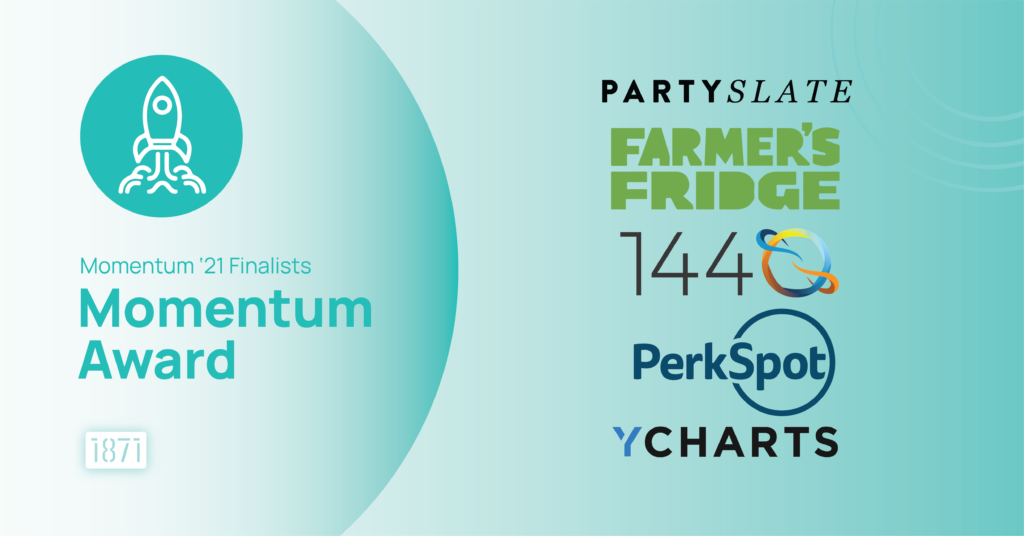
Momentum Award
The Momentum Award is presented to a growing company that has the strongest potential to emerge as the leader in its market, has bootstrapped and/or received external funding and has made a substantial impact on Chicago’s tech and startup community.
YCharts | YCharts is an investment research platform that enables smarter investments and better client communications. Built for RIAs and asset managers, YCharts offers comprehensive data, powerful visualization tools, advanced analytics for equity, mutual fund and ETF research, portfolio construction, idea generation, and market monitoring.
Farmer’s Fridge | Farmer’s Fridge makes it simple for everyone to eat well. The company operates hundreds of automated smart Fridges, offers a direct-to-consumer delivery program spanning 35 markets, and partners with leading retailers including Target and Jewel-Osco. Since 2013, the company has sold more than 5 million meals.
1440 | 1440’s daily newsletter provides an impartial view of what’s happening in the world so our nearly 1 million readers can form their own conclusions. 1440’s CEO, Tim Huelskamp is also co-founder of Fifth Star Funds, a philanthropic venture fund that equalizes opportunity for underrepresented founders in Chicago.
PerkSpot | PerkSpot helps employees get the most out of every dollar they spend. With thousands of discounts from top brands, PerkSpot is a popular employee benefit and simple solution for employer-sponsored recognition. PerkSpot plays an important role in promoting financial wellness and providing an attractive voluntary benefit to employers.
PartySlate | PartySlate.com is the first platform that helps people plan all types of events, including baby showers, engagement parties, product launches, holiday parties, weddings, birthday parties, galas, and so much more. PartySlate is a two-sided marketplace, offering a place for event professionals, vendors, and venues to showcase their work, build their brands, and drive new leads.
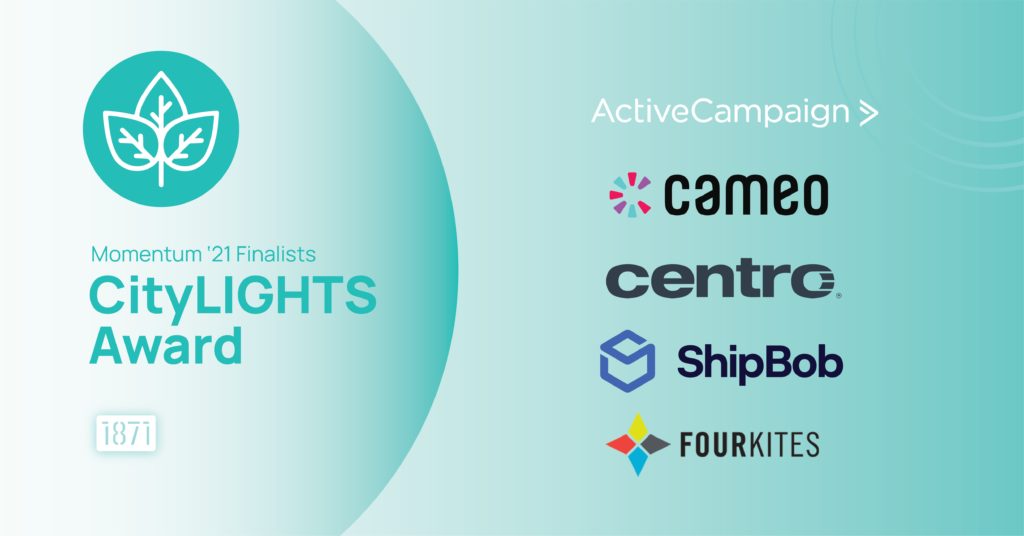
CityLIGHTS Award
The CityLIGHTS Award is presented to a growth stage company that, through innovation in products, services, or business approach, has grown to become a serious competitor in the marketplace and serve as a beacon in the Chicago tech community.
Cameo | Cameo is the leading marketplace connecting fans directly with tens of thousands of pop culture personalities in the form of customized video messages, live video calls and direct messages. Founded in March 2017 by Steven Galanis, Devon Townsend, and Martin Blencowe, Cameo’s mission is to enable the most personalized and authentic fan connections on earth.
ShipBob | ShipBob is the leading cloud-based logistics platform for ecommerce businesses. As an end-to-end global fulfillment solution, ShipBob helps deliver packages in 1-3 business days. The ShipBob dashboard integrates with top ecommerce platforms and enables brands to manage inventory, orders, and shipments, and leverage analytics to run their business.
Centro | Centro provides comprehensive automation and intelligence software for marketers. Its Basis platform consolidates digital marketing operations and improves the lives of media professionals by making their jobs easier and driving optimal outcomes and performance for marketing enterprises.
ActiveCampaign | ActiveCampaign’s category-defining CXA platform helps 150,000+ businesses in 170 countries meaningfully engage with customers. The platform gives businesses of all sizes access to 500+ pre-built automations that combine email marketing, marketing automation & CRM for powerful segmentation and personalization across social, email, messaging, chat & text.
FourKites, Inc | FourKites has built the largest, most intelligent network of supply chain partners that provides real-time visibility and the most accurate data to help companies improve on-time delivery and optimize operations.

Outstanding Tech CEO Award
The Outstanding Tech CEO Award is presented to a CEO who has successfully scaled and nurtured their company through outstanding leadership, ability to attract and retain talent, dedication to diversity and inclusion, and implementation of strategic growth opportunities.
Stan Chia, CEO of Vivid Seats | Stan Chia is the Chief Executive Officer (CEO) of Vivid Seats, the largest and most trusted independent ticket marketplace in North America. Mr. Chia has previously held leadership roles at GrubHub, Amazon, Cisco, and GE. Mr. Chia was born in Singapore and was named to Crain’s “40 Under 40”.
Jay Rudman, CEO of Topstep | As the Chief Executive Officer at Topstep, Jay Rudman has been a crucial contributor to the company’s growth and success, all-the-while remaining true to the company’s mission and vision. He is an experienced entrepreneur with several business successes, and has a passion for accelerating the growth of early stage businesses, as an executive, consultant or coach/mentor.
Garry Cooper Jr., CEO of Rheaply | Dr. Garry Cooper is CEO and co-founder of Rheaply, a company that enables organizations to better visualize, quantify, and utilize resources. He serves on the boards of P33 Chicago and 1871, the faculty of Northwestern University, and the investor team at LongJump Ventures, of which he is a founding partner.
Rick Hammell, CEO of Elements Global Services | With a passion for business, collaborative team-building, and meeting customer and market demands, Rick Hammell works to create an environment at Elements Global Services where creativity and innovation are encouraged, and extraordinary energy and dedication are instilled. At Elements Global Services, Rick ensures that clients come first and that the core values of integrity, dedication, accountability, partnership and passion are also top-of-mind.
Kyle Nakatsuji, CEO of Clearcover | Kyle Nakatsuji is the co-founder and CEO of Clearcover, the smarter car insurance company. Under his leadership, Clearcover has grown into a true insurtech disruptor with an all-in-one mobile app and industry-leading claim adjustment turnaround time. Clearcover has raised more than $329 million and currently operates in 16 states.
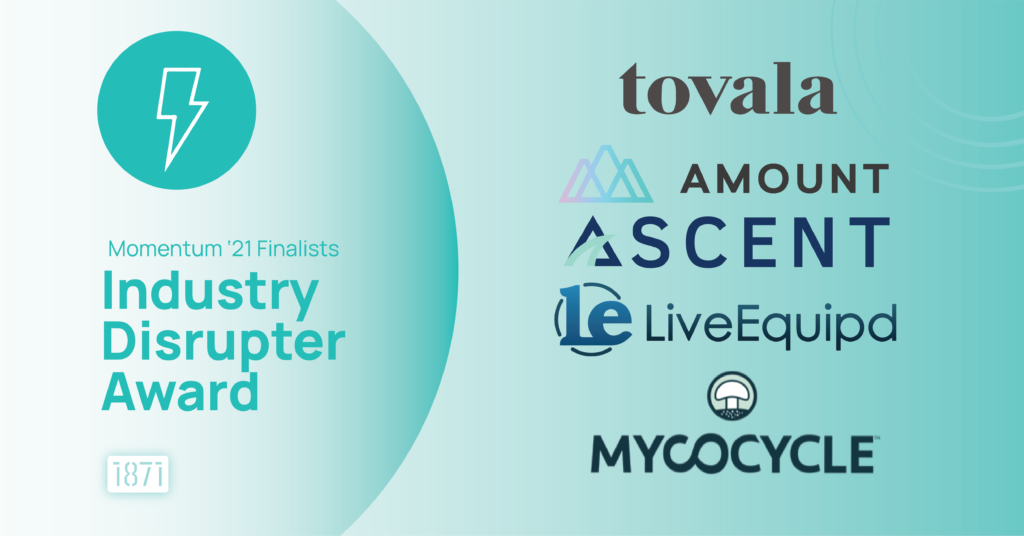
Industry Disrupter Award
The Industry Disrupter Award is presented to a company that has developed or introduced an ingenious, non-traditional, and innovative product or service that has significantly disrupted the industry.
Tovala | Tovala is a time-saving smart oven-paired subscription meal service. The Tovala Smart Oven scans, steams, broils and bakes chef-crafted meals based on a custom QR code. Tovala provides fresh meals without the time commitment or prep typically involved, delivering the experience of a home-cooked meal without actually cooking.
Mycocycle, LLC | Mycocycle is a waste-to-resource process that uses fungi via mycoremediation to remove toxins out of waste resulting in material reuse and a more circular process. Joanne Rodriguez, Mycocycle’s Founder and CEO, has more than 30 years of industry experience and has been a national leader in issues related to sustainability in the built environment.
LiveEquipd | LiveEquipd is a web-based platform for organizations to streamline their equipment procurement process while creating a robust resource to promote healthy outcomes. LiveEquipd simplifies equipment procurement for healthcare professionals and their patients with paralysis related disabilities.
Ascent RegTech | Ascent is the platform that automates regulatory change management and helps customers achieve end-to-end compliance. Powered by Regulation AI, Ascent is the market’s leading compliance automation solution that helps financial services firms reduce regulatory and reputational risk.
Amount | Amount delivers technology for financial institutions that seamlessly integrates with their existing infrastructure to transform the digital consumer experience in months. Amount works with many of the world’s largest banks, including HSBC, Barclays and TD Bank, which collectively manage $2T in US assets and service 50 million customers.

